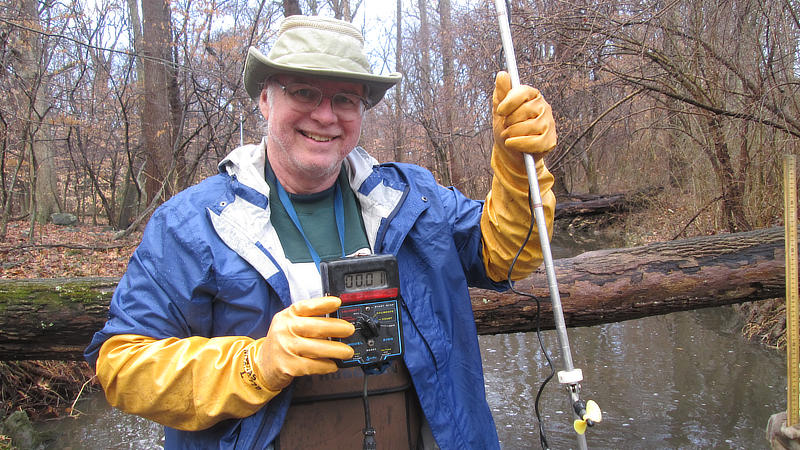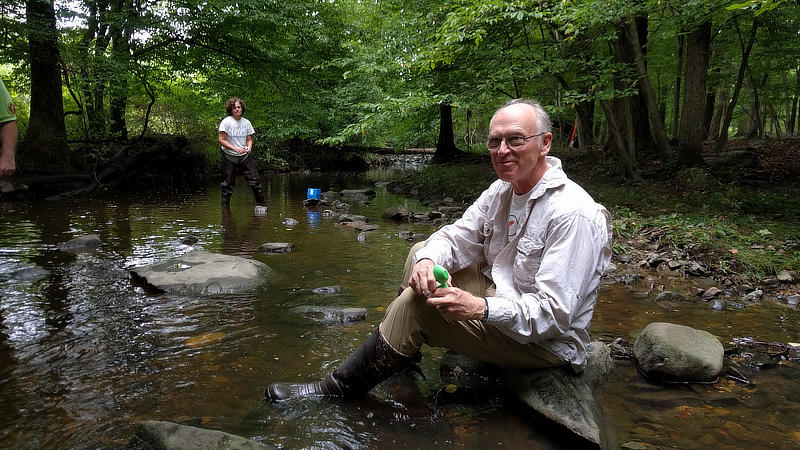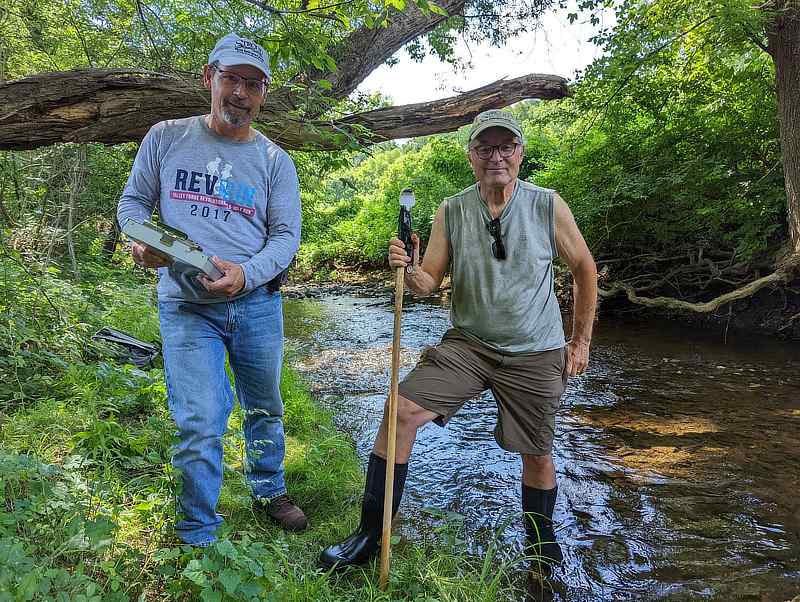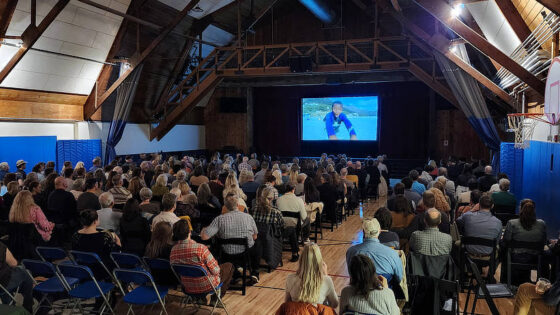Watershed organizations and community scientists receive training and technical support from Stroud Water Research Center. By sharing their expertise, the Stroud Center helps volunteers collect high-quality data that not only supports scientific research but also enables community leaders to make informed decisions about protecting local waterways.
The Stroud Center has been instrumental in setting up the organizations and their volunteers for success by leading workshops and monthly check-ins, providing stream monitoring equipment and educational training, helping the volunteers make sense of their data, and offering guidance on science communication.
In their own words, some of the volunteers describe what the support has meant to them.
Jeff Chambers, Ph.D., Delaware Nature Conservancy Stream Steward

“The Nature Conservancy’s Stream Stewards program probably wouldn’t exist without Stroud’s support — from how we gather data, to how we interpret it, to making an impact in the local community. Regarding the monthly meetings, if we all just came together without the support and education we’ve received from the Stroud Center, I don’t know that we’d be very far along the path of where we are today.
I monitor Ramsey Run, a small stream, usually very clean. It feeds into the Brandywine River, which is a tributary drinking water source for the city of Wilmington. Because of regular stream monitoring, we know the conductivity of that stream usually runs around 250 [microsiemens per centimeter]. It’s pretty clean. Suddenly, we were getting conductivity readings in the order of 3,000. Just one day — boom — there it was.
Community scientists made it known to me that this was going on, so I went upstream to do reconnaissance. I went out with a handheld sensor that I learned how to use through the community science program to find the pollution source, and I found it: a salt shed.
Some very well-meaning folks were trying to cover a salt pile, but it was getting rained on and washing away. Upstream of the shed, conductivity was around 250 — a normal reading — but just below it, conductivity was in the tens of thousands. Once the couple discovered their shed had this vulnerability, they took the salt out of it, and the problem went away. Within a few days, conductivity was back to normal.
We used what we had learned from the Stroud Center to identify the problem and shut it down.”
Robert Tuttle, Delaware Nature Conservancy Stream Steward

“I was on a hike one day, and I saw a lady and some kids in a stream. They were doing some water quality monitoring. I thought, well, that’s a neat idea. I was retired and wanted to give back, so I started with the Delaware Nature Society. Then, I got involved with the Nature Conservancy and the White Clay Wild and Scenic River Program. I started collecting data and producing reports for them to communicate to the public. I feel very happy I took this route. I’ve enjoyed it thoroughly and learned a lot at the same time.
The Stroud Center helped us by providing monitoring equipment, motivation, and help to understanding the relationship between conductivity and chloride and road salt. I’ve attended courses to learn how to use the equipment and Monitor My Watershed. It’s been valuable.
Through monitoring, we found out that Rocky Run is heavily impacted by the Concord Mall and road salt. There are outfalls coming from the parking lot, and some were running very high conductivity. We reported it to the county, and we got one of the pipes shut down. That was a good thing.
The county folks said they never would have been able to identify that particular outfall without the community scientists. Once they knew about it, they shut it down in no time.”
James Coffey, Perkiomen Valley Trout Unlimited
“Perkiomen Valley Trout Unlimited monitors the water quality of Perkiomen Creek. It’s a high-quality creek. There’s a lot of people I’d like to thank — John Jackson, David Bressler, Shannon Hicks, Wills Curley, Tara Muenz, and Rachel Johnson, and I know I’m missing some people. I’m retired from teaching biology and environmental science at Upper Perkiomen High School, but I’m still involved doing Trout in the Classroom with Tara. Without the support and education on how to interpret the data, what to do with the data, and how to keep EnviroDIY Monitoring Stations working — it would be mind-boggling. If you got a problem and don’t how to fix it, you’ve got a resource in Stroud to go to for help.
We had John Jackson a couple of times in our chapter meetings as a speaker. He gives a very eye-opening presentation.
With Trout in the Classroom, we have a big release day. It’s really not about trout, it’s about conservation.
I’ve been involved with riparian restoration since back in the 1990s, and Stroud has always been there also. They’ve supported a lot of riparian restoration, and what’s really cool about that is they also show you to do it correctly and keep trees alive, so they’ve been a valuable resource over the years.
We’re spoiled. How many other places within the United States have a Stroud Water Research Center in their backyard doing what they’ve done — not only incredible science but reaching out into the community with education and restoration? Stroud has just been a great organization.”
George Seeds, Penn State Master Watershed Steward

“Stroud is doing such important scientific research. For a lot of people, including myself, it’s inspiring and provides hope that the results of the research will help people care for their water and the earth.
Water is so fundamental to life that if there’s one thing that we need to contribute to it’s the health of our streams, and I don’t think progress can be made without community science. The volume and consistency of the data we’re collecting is very compelling.
The Stroud Center’s development of the EnviroDIY Monitoring Stations and the support we get to keep them going is key to collecting community-level data. The impact is really at the local level, and these sensors allow communities to impact their streams and their water in a positive way.
The education I’ve received has deepened my knowledge. It’s made me more fluent in the issues affecting streams when I talk to friends and neighbors.”
Get Involved
Interested in monitoring water quality in your area? Email us at communitysci@stroudcenter.org to become a community scientist today.



